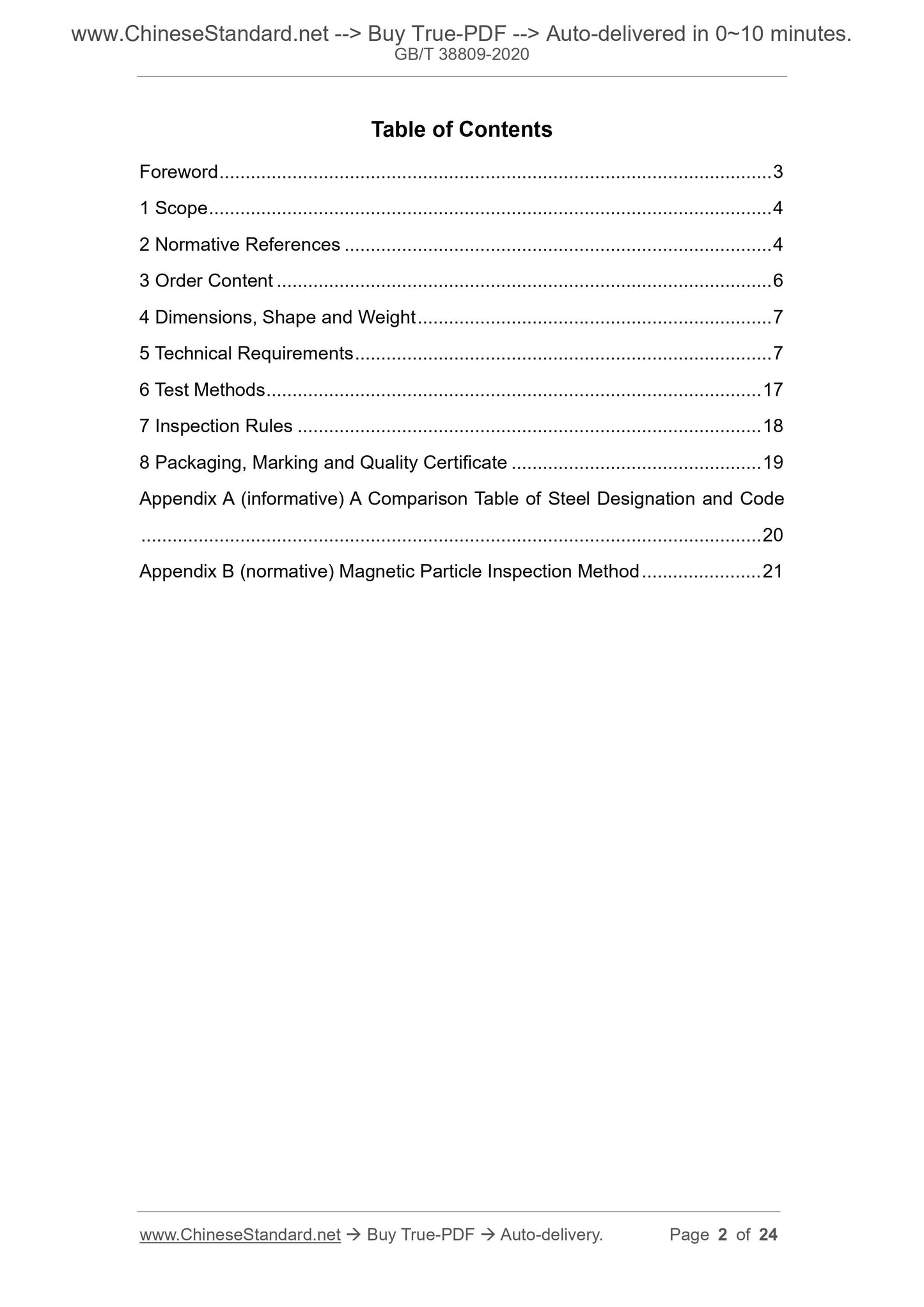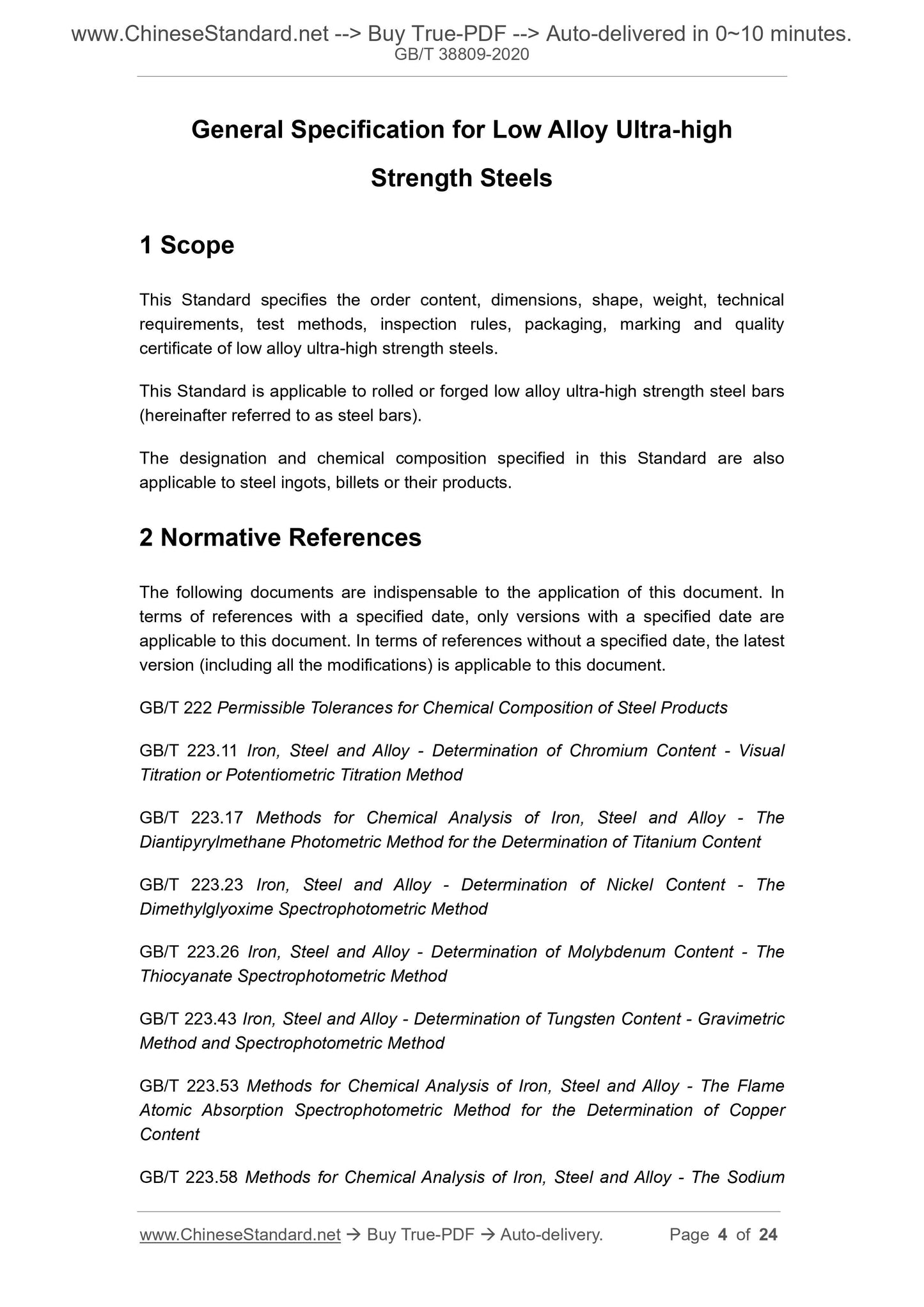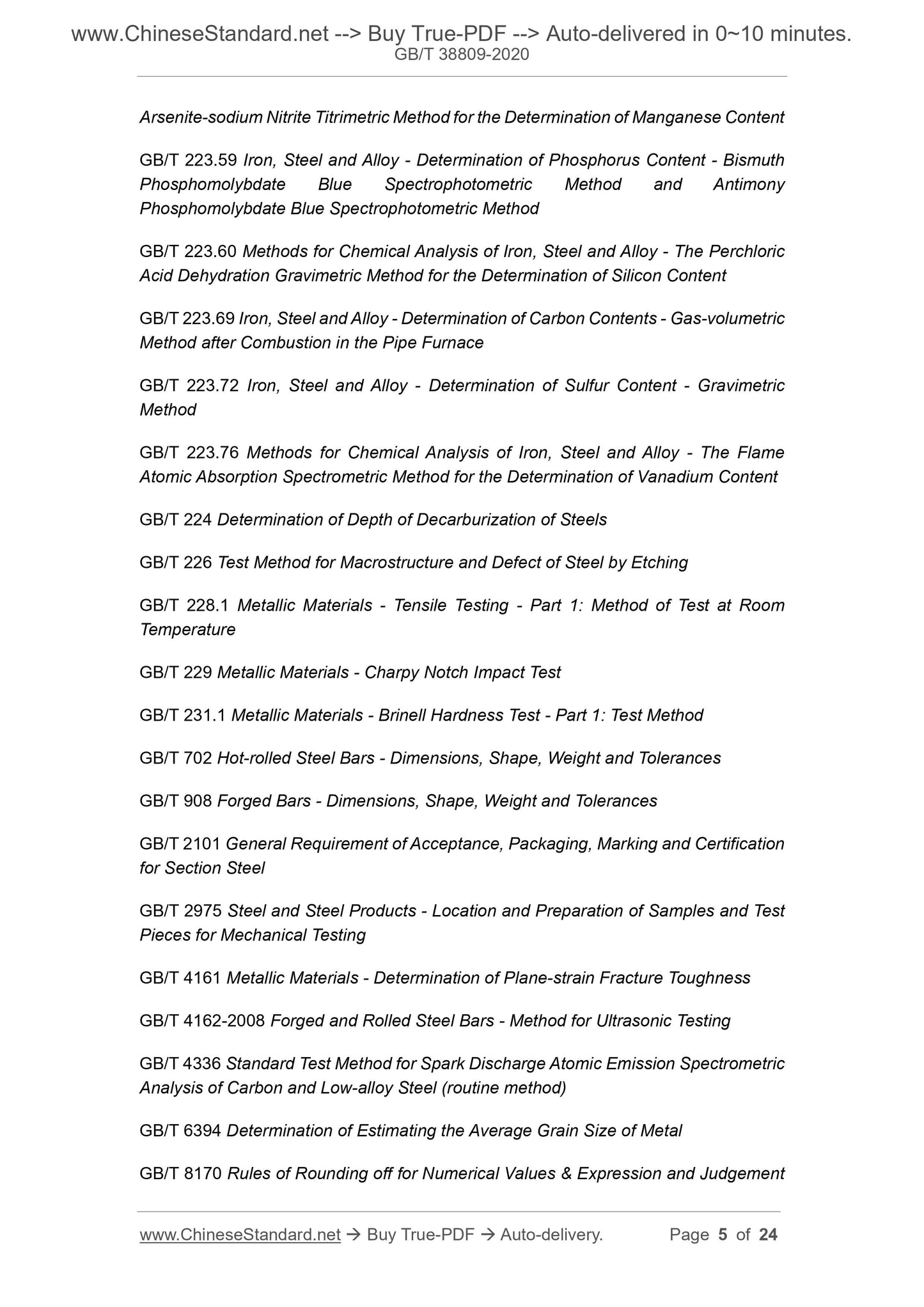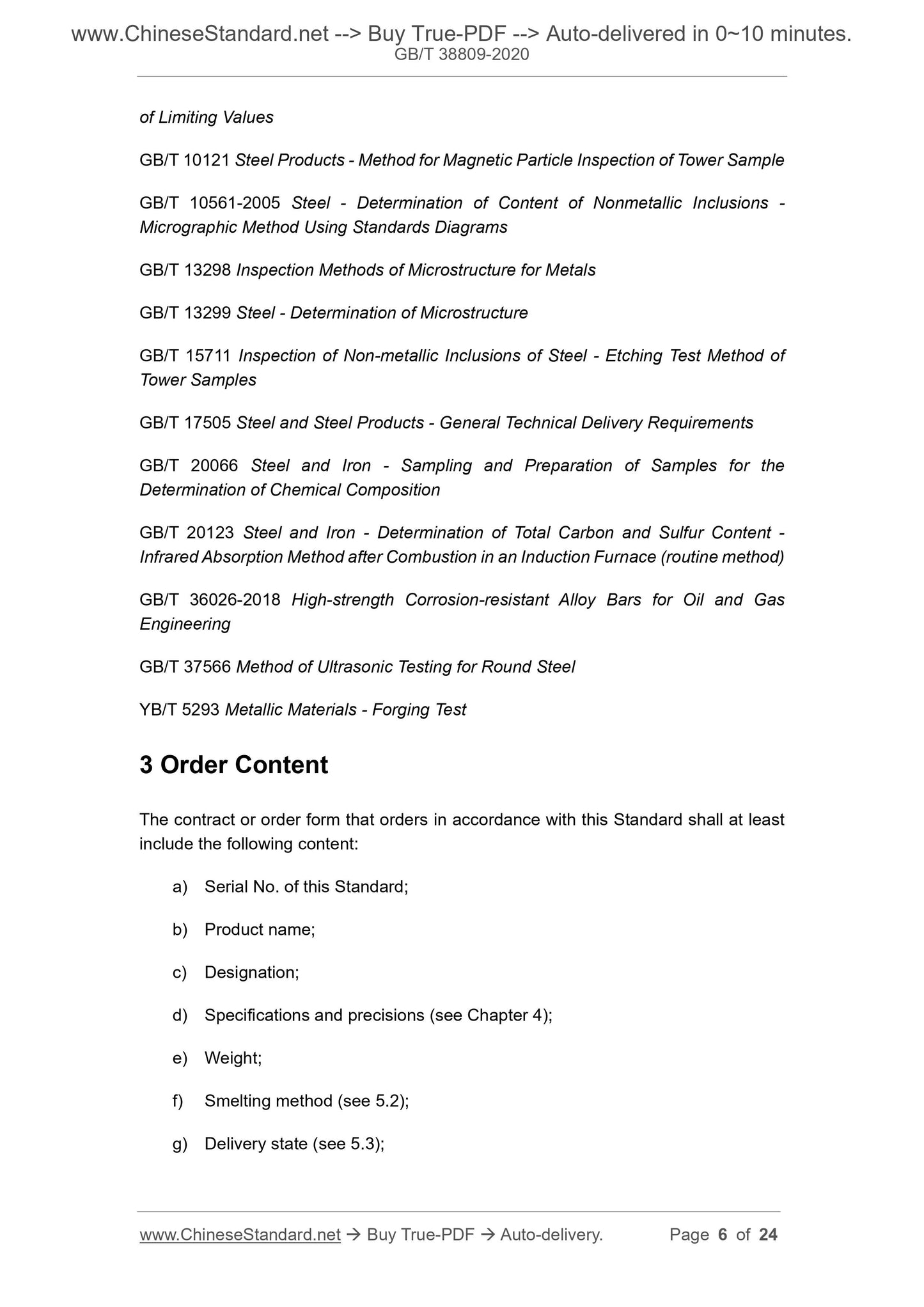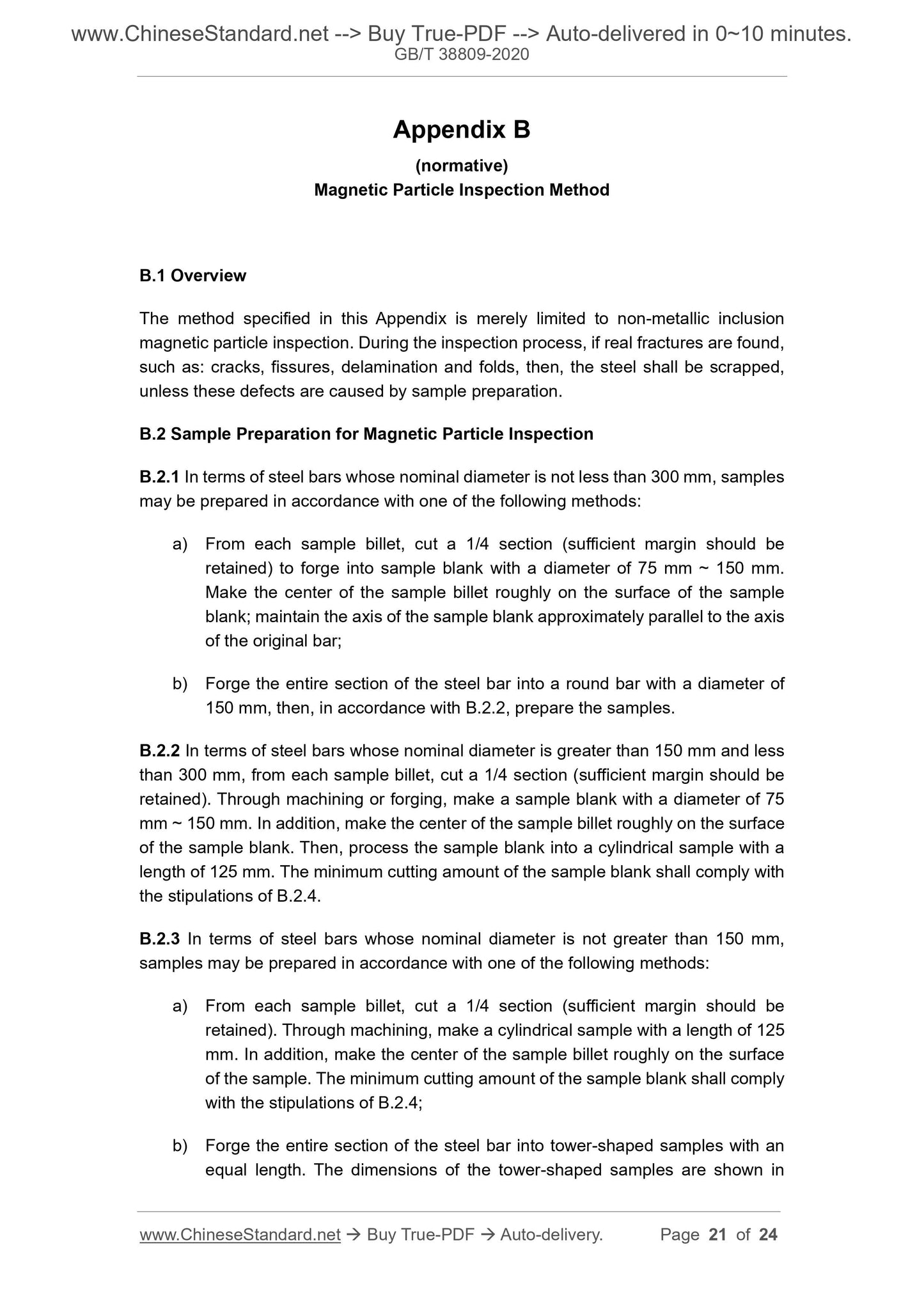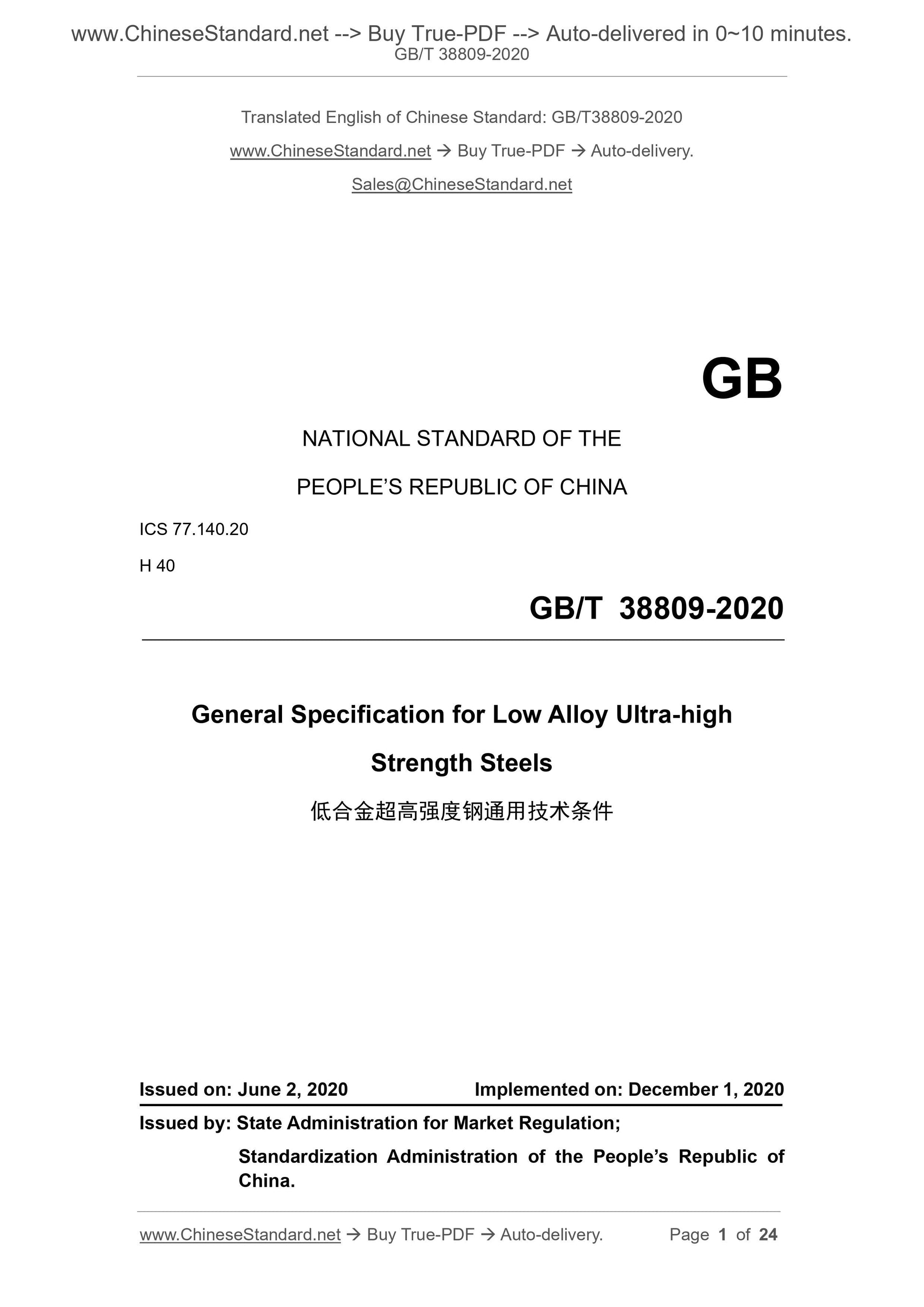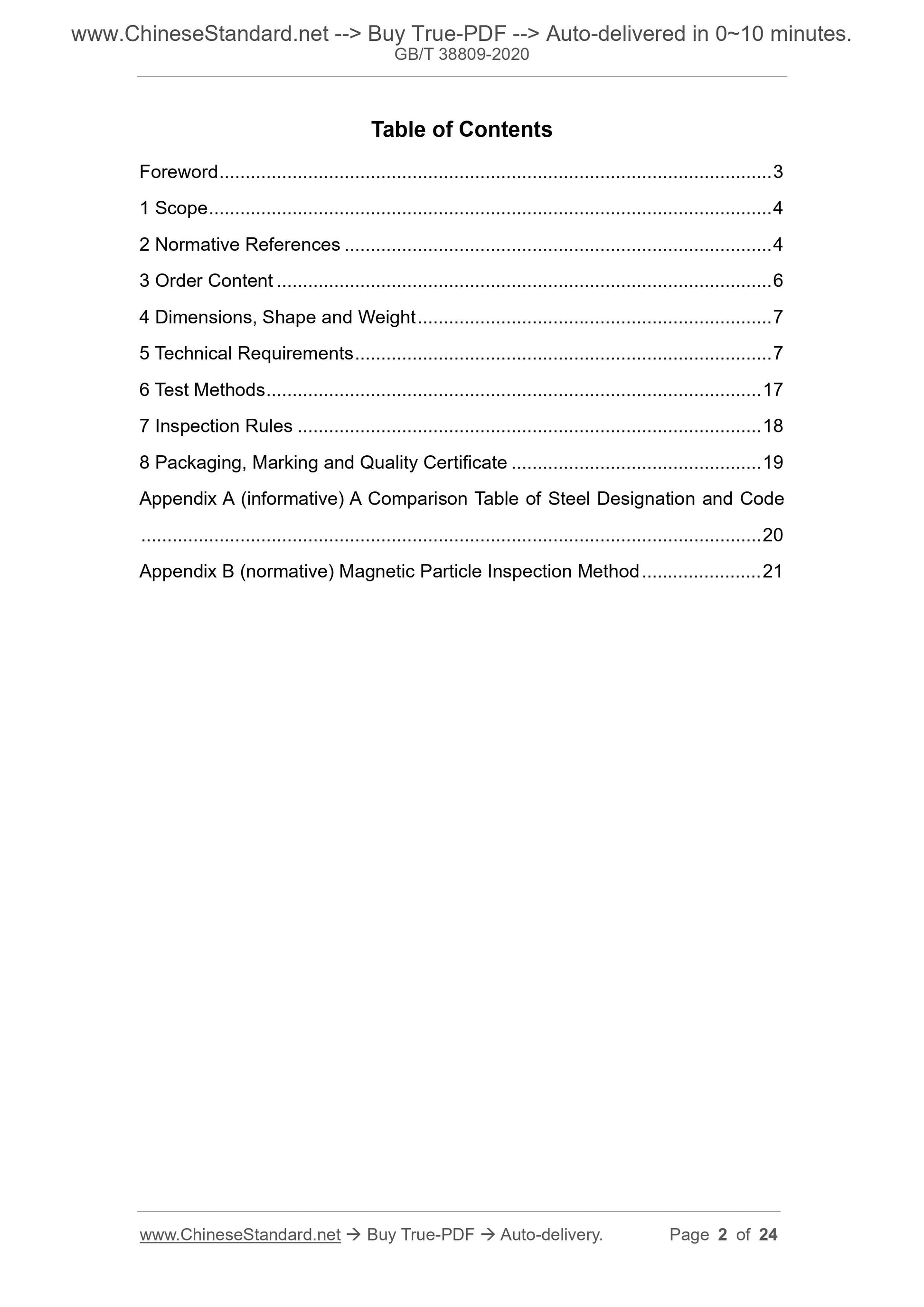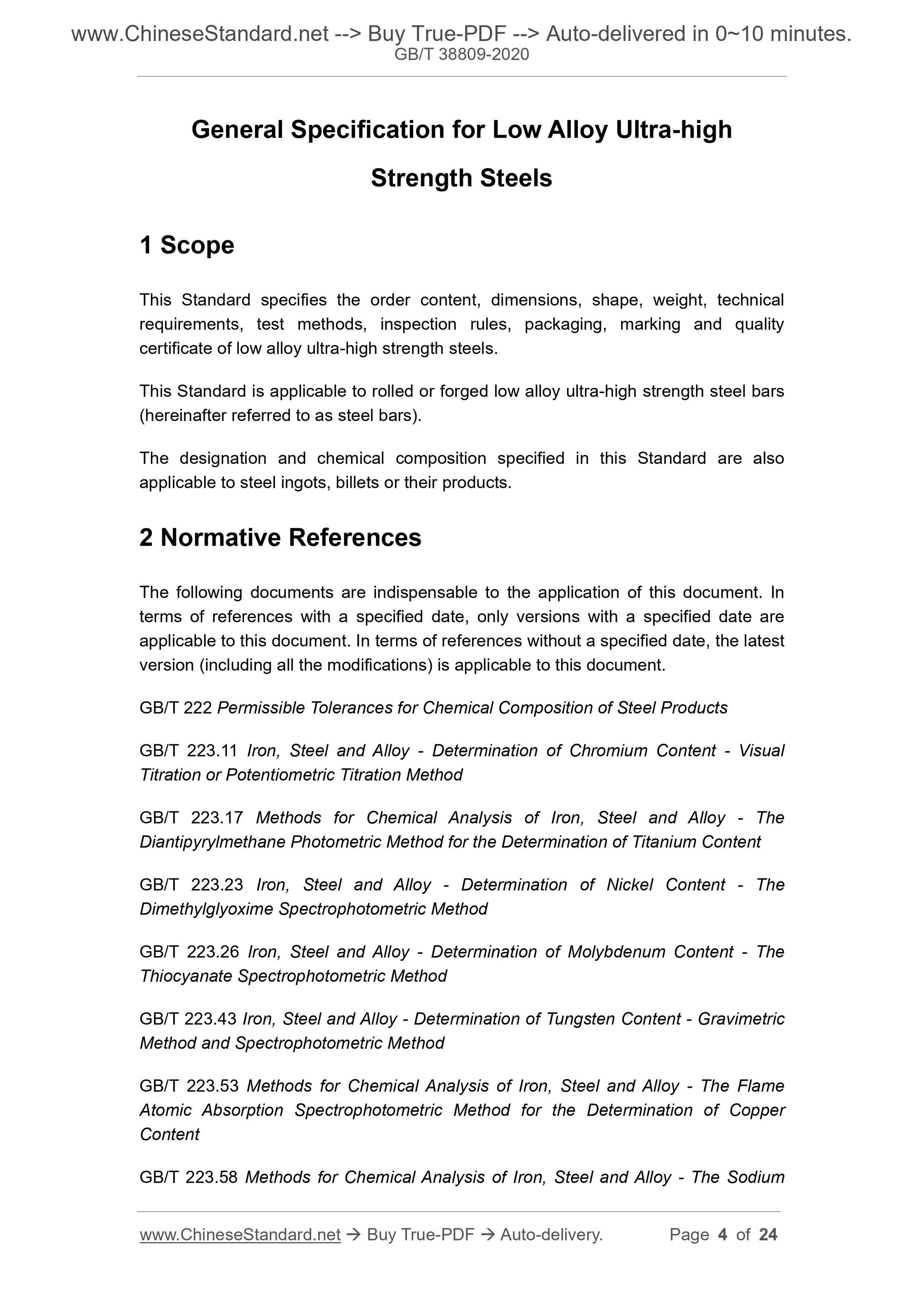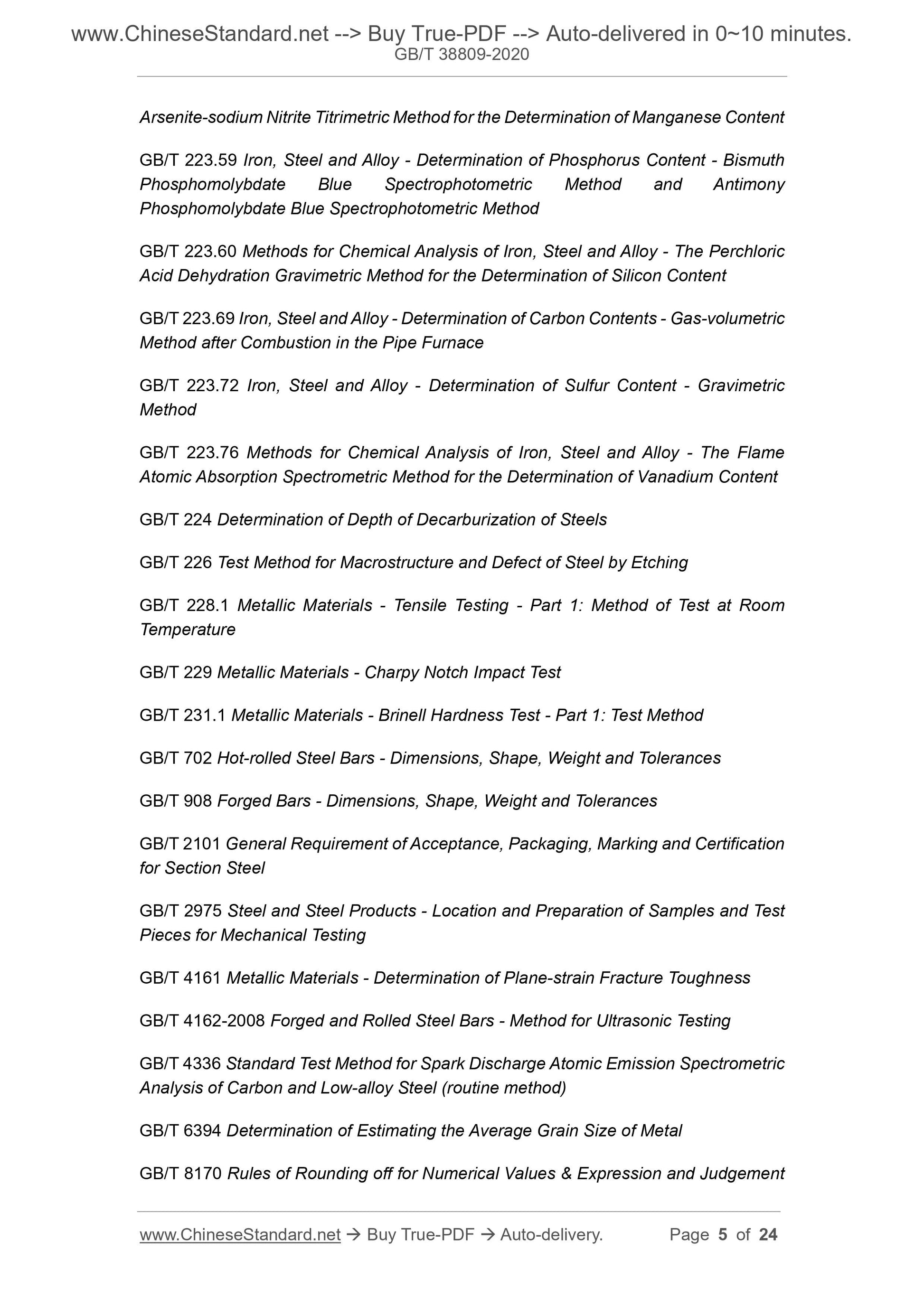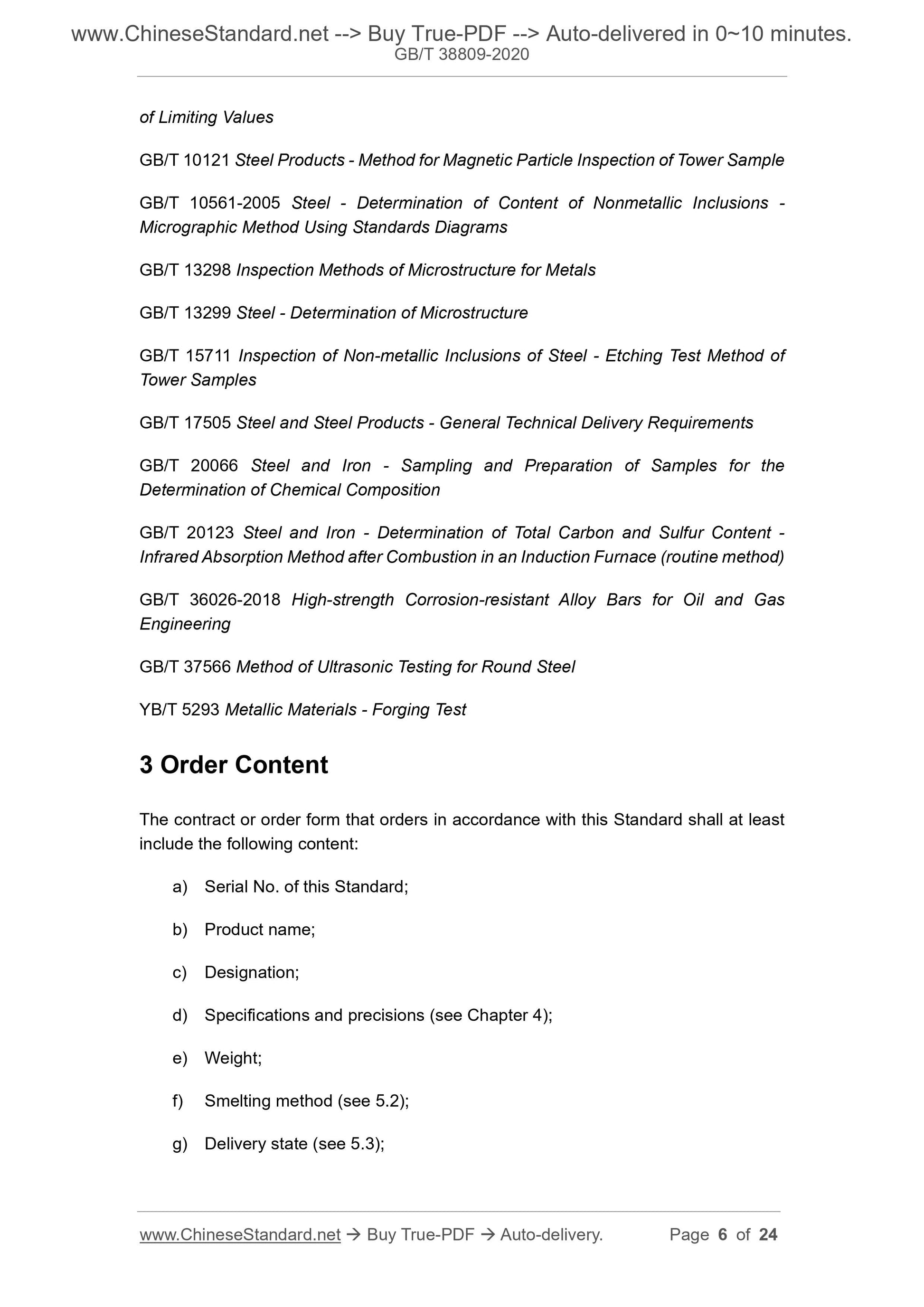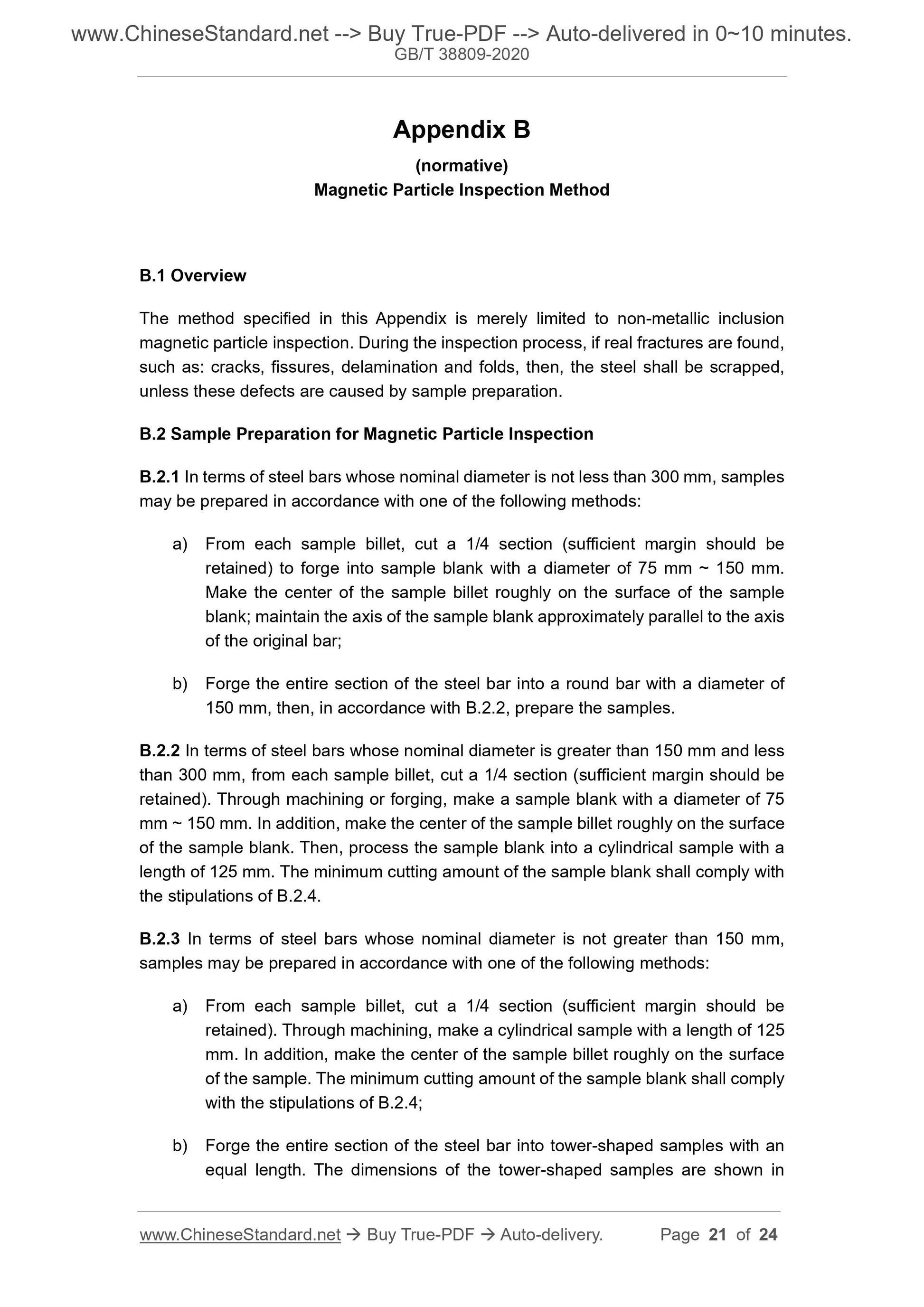1
/
of
6
www.ChineseStandard.us -- Field Test Asia Pte. Ltd.
GB/T 38809-2020 English PDF (GB/T38809-2020)
GB/T 38809-2020 English PDF (GB/T38809-2020)
Regular price
$225.00
Regular price
Sale price
$225.00
Unit price
/
per
Shipping calculated at checkout.
Couldn't load pickup availability
GB/T 38809-2020: General Specification for Low Alloy Ultra-high Strength Steels
Delivery: 9 seconds. Download (and Email) true-PDF + Invoice.Get Quotation: Click GB/T 38809-2020 (Self-service in 1-minute)
Newer / historical versions: GB/T 38809-2020
Preview True-PDF
Scope
This Standard specifies the order content, dimensions, shape, weight, technicalrequirements, test methods, inspection rules, packaging, marking and quality
certificate of low alloy ultra-high strength steels.
This Standard is applicable to rolled or forged low alloy ultra-high strength steel bars
(hereinafter referred to as steel bars).
The designation and chemical composition specified in this Standard are also
applicable to steel ingots, billets or their products.
Basic Data
| Standard ID | GB/T 38809-2020 (GB/T38809-2020) |
| Description (Translated English) | General Specification for Low Alloy Ultra-high Strength Steels |
| Sector / Industry | National Standard (Recommended) |
| Classification of Chinese Standard | H40 |
| Classification of International Standard | 77.140.20 |
| Word Count Estimation | 18,110 |
| Date of Issue | 2020-06-02 |
| Date of Implementation | 2020-12-01 |
| Issuing agency(ies) | State Administration for Market Regulation, China National Standardization Administration |
Share

